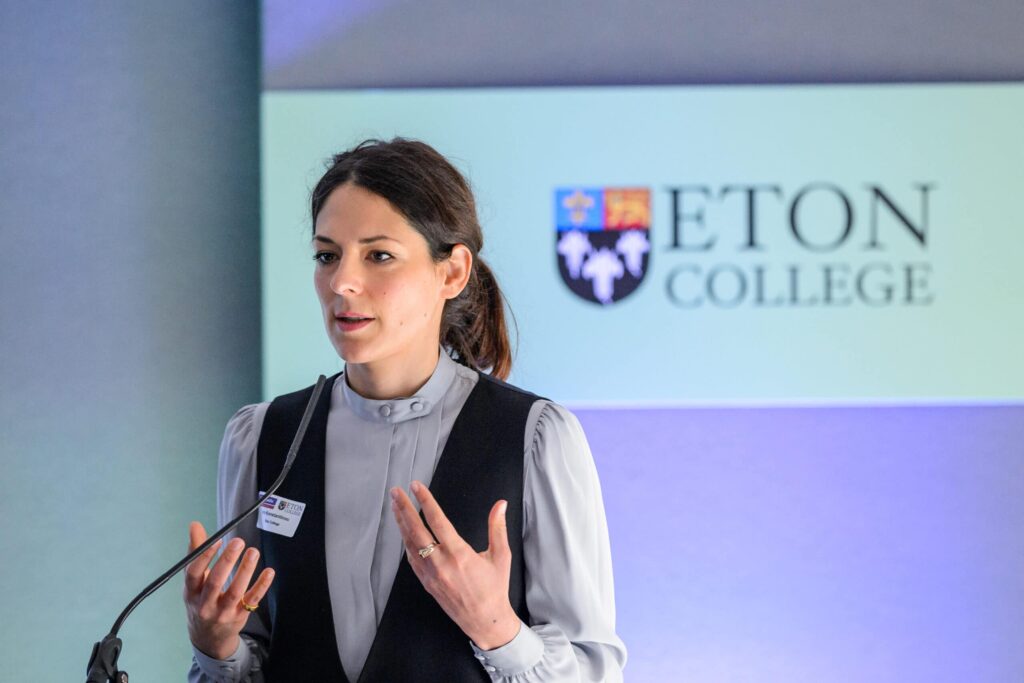Jonathan Beale, Researcher-in-Residence, CIRL
24 September 2019
It is essential that the student acquire an understanding of and a lively feeling for values. … It is also vital to a valuable education that independent critical thinking be developed in the young human being…
Albert Einstein, ‘Education for Independent Thought’ (1952)[1]
How should we teach values? This blog post outlines three approaches towards teaching values and argues that each plays an important role in values education. The third approach, which is this blog’s focus, concerns the role of critical thinking within values education.
- Values and character
Addressing the question of what constitutes the best way to teach values takes us to a perennial philosophical question addressed by Plato: ‘Can virtue be taught?’. This is the guiding question of Plato’s Meno and is also addressed in his Protagoras.[2] This article assumes that virtue can be taught but emphasizes how difficult it is and draws connections between the development of virtue and the teaching of values. These are perhaps best addressed through discussion not of the ideas of Plato but of Aristotle, at the core of whose moral philosophy are the questions of what constitutes the most virtuous life and how to reach it.
In his Nicomachean Ethics and Eudemian Ethics, Aristotle offers a conception of the good life – ‘eudaimonia’, meaning, roughly, human flourishing – centred around the aim of cultivating a virtuous character.[3] This requires rigorous practice, such that virtuous practices become habits. Through habituation, virtues can become character traits. As virtues come to constitute part of one’s character, one becomes a virtuous person. To be a tolerant person, for instance, one must rigorously practise being tolerant, through a variety of contexts over many years, learning from those whose characters manifest excellent examples of tolerance. Through such practice, tolerance becomes a habit; through habituation, tolerance can become a character trait and one thereby becomes a tolerant person.
Values are distinct from virtues; but the two are intimately connected. Virtues are not always a manifestation of values; someone could come across as polite, for instance, without endorsing the value of politeness. But values are often manifest as virtues and, for the truly virtuous person, their virtues reflect or are a manifestation of their values. A person is, therefore, more able to develop virtues with the corresponding or underlying values in place.
The ultimate objective of values education is to improve a person’s character such that they become virtuous (or more so) and their virtues reflect important values. When we educate students about values we are not aiming to simply teach them about values and their importance, but to inculcate values within them. Through inculcation, values education aims to cultivate virtuous persons. The teaching of values is, therefore, closely related to the teaching of virtue.
An important lesson we can learn from Aristotle is that teaching values requires far more than classroom lessons. To develop a character possessive of any value, a student is likely to need to practise activities indicative of the values to be learned, across various contexts over a long time. It helps significantly if the student is a participant in a culture embodying these values. The best environment to acquire the values to be learned and develop the virtues often reflective of such values includes people whose characters and ways of life manifest those values and virtues. Such conditions are among those that provide an environment in which one can become habituated into the virtues that make them a virtuous person.
To successfully teach values, in the sense that students do not merely understand them but they respect them and their characters reflect them, a school must, therefore, do much more than teach about values in lessons. Values have to be embedded within a school’s culture. Values need to be reflected in and intertwined within school activities, including teaching practices, assemblies, events, clubs and interpersonal attitudes among and between the staff and student cohorts. Values, when successfully embedded in school life, help with students’ character development and can help them to flourish, in the Aristotelian sense.
That is the approach towards teaching values most likely to achieve the objective of cultivating virtuous persons. It is also the most difficult to achieve, because it requires the support of a school’s entire culture: its ethos, environment, activities, and the encouragement of staff and students. Various efforts are made by schools to achieve this. For instance, through the embedment of values education in a school’s ‘Social, Moral, Spiritual and Cultural’ programme; through the ‘Core Values’ many schools endorse; and through annual values some schools promote. These are some of the ways that help to achieve this first and most important approach towards the teaching of values.
- Direct values education
The second approach towards teaching values I will discuss is what might seem to be the more straightforward approach of classroom teaching about values. The major limitation facing this is that the teaching of values is far from straightforward. That values require practice and the development of skills does not make values a pedagogically unique field; all disciplines require practice and the development of skills. What makes values a distinctive pedagogical category is that values are things in which one believes, manifested through one’s character and way of life, often taking the form of fundamental principles which guide one’s conduct and in which one’s worldview is rooted. Values education therefore requires a more holistic pedagogy, central to which is the first approach towards teaching values. This takes values education far beyond the classroom.
What we might call ‘direct’ values education in schools – i.e., where the subject matter of a lesson is values and the primary lesson objective is to understand a particular value – often takes place within tutor group lessons. Such lessons face significant hurdles in meeting the aim of cultivating virtues, such as: little time; no homework requirements; few means of assessing the extent to which values have been learned; the teacher often not having specific expertise in values education; and the lessons often functioning as part of a mixed programme of various topics the tutor is required to teach over the year.
It is extremely unlikely that direct values education, if taken as the only or predominant approach towards teaching values, can fulfil what we might call the ‘Aristotelian objective’ of cultivating virtuous persons. By contrast, I would argue that the first approach can fulfil the Aristotelian objective, even if it is the only approach taken towards teaching values. In other words, values can be taught and virtues can be cultivated without direct values education.
Notwithstanding the limitations facing direct values education, this is an important part of values education. It is of the utmost importance to teach students what, for example, democracy is and why it matters, and to engage in discussion about its strengths and weaknesses. But this approach towards values education plays a supporting role to the first way of teaching values, since the ultimate aim is to cultivate virtuous persons.
- The role of critical thinking in values education
The third approach towards teaching values I will discuss concerns the role of critical thinking within values education. An important component of not only a good values education but a good education in general is developing the skillset to make rational, independent, critical judgements about values and beliefs. This is an area where philosophy plays an important role. Axiology is part of philosophy’s subject matter; and the field of philosophy sometimes referred to as ‘critical thinking’ can be used to provide students with this skillset.
Critical thinking is the elementary study of arguments and reasoning, fundamentally concerned with the way arguments are structured and produced. It aims to develop skills in extracting, analysing, constructing and evaluating arguments. It involves studying the following areas, among others:
- the distinction between arguments, rants, explanations, and information;
- the structure of an argument, its constituent parts and their roles (premises, conclusions and intermediate conclusions);
- extracting an argument using indicator words and phrases to identify premises (e.g. ‘because’, ‘as’, ‘since’) and conclusions (e.g., ‘so’, ‘therefore’, ‘hence’);
- joint and independent reasoning;
- evaluating arguments by identifying informal fallacies, appeals (e.g., to tradition or popularity), and identifying uses of loaded language in arguments;
- necessary and sufficient conditions;
- the concepts of consistency and inconsistency, and a contradiction;
- identifying assumptions and enthymemes;
- assessing the credibility of sources in terms of whether the evidence in question is reliable;
- developing and responding to arguments, by counterarguing and constructing counterexamples;
- argument mapping.
Critical thinking is sometimes referred to by other names, such as ‘thinking and reasoning skills’. Most or all of the above would be among the areas of a course in informal logic. There is debate over the distinction between informal logic and critical thinking.[4] ‘Critical thinking’ is sometimes the name given to courses more elementary than those in informal logic. Understood in this way, where such courses are offered in secondary schools, the courses offered would typically be critical thinking rather than informal logic.
A course in critical thinking needs subject matter to use for applying the skills learned. This subject matter could come from anywhere. It is pedagogically beneficial to show how the skills learned can be applied to arguments found in the media, to illustrate how such skills can be applied usefully in everyday life and to train students to be more critically engaged with what they encounter in the media. It is also often easier to engage students with critical thinking when they are shown how the skills it teaches can be applied to what they encounter in their day-to-day lives. That is an important and effective way of teaching critical thinking, in terms of applying learning to real life and eliciting student engagement.
Critical thinking can support values education because it offers a means of teaching students how to critically assess which beliefs are, inter alia, ill-founded, inconsistent, or unethical. Most importantly, it teaches students how to do this independently. That is especially important when we are concerned with values. Values often take the form of principles that guide one’s conduct and often play a constitutive role within worldviews.
Many people have pernicious values. For example, an individual might acquire prejudicial beliefs as a result of upbringing or cultural surroundings, and such beliefs might play a fundamental role in their worldview. The most fruitful way to address pernicious or potentially pernicious beliefs is to equip a student with the skills to reach their own independent critical judgements about such beliefs. If a prejudicial belief is among those beliefs that are partly constitutive of a person’s identity or worldview, teaching someone that the belief is prejudicial without at the same time equipping them with the skills to independently identify and critically evaluate why it is so is likely to be futile, if the ultimate aim is for them to see this for themselves and to no longer assent to the belief or to the form of prejudice underlying it. Logic and critical thinking offer perhaps the best skillset we can provide for individuals to independently critically assess which beliefs are rationally defensible.
- Integrating critical thinking with the subjects where we most often encounter values
To best utilise critical thinking to support values education, it should take as its subject matter those fields where the values and beliefs that underpin worldviews and influence the ways in which people live are most often acquired. The clearest examples of such fields are religious studies and politics. One way to utilise critical thinking to support values education, then, is to integrate it within the study of these fields.
To illustrate, here’s two examples of how critical thinking could be integrated within religious studies. A course on Christianity might involve studying some of the major contributions to Christian theology and the philosophy of religion of St Augustine of Hippo. Students might learn about Augustine’s contributions to three Christian doctrines, by reference to Augustine’s City of God: the church and sacraments; grace; and the Trinity.[5] They might study Augustine’s attempt to reconcile a literal interpretation of Genesis with the evil in the world, in his theodicy arguing that evil is the privation of good.
Concomitantly, students could engage in a philosophical analysis of the problem of evil, learning about the concepts of consistency and inconsistency, specifically through the context of the inconsistency argued to arise between the divine attributes of omnipotence, omniscience, and supreme goodness, on the one hand, and the existence of evil, on the other.[6] Students could develop their skills in counterarguing by studying responses to Augustine’s theodicy.
A course on Islam might involve an introduction to key Islamic theologians, including al-Ghazālī (Abū Hāmid Muhammad ibn Muhammad al-Ghazālī) and Averroes (Ibn Rushd). Among the topics covered in lessons over those weeks could be the roles and significance in Islamic scholastic theology (‘Kalām’) of al-Ghazālī and Averroes, such as al-Ghazālī’s contributions to Sufism and Averroes’ historical significance in the perception of Islam in the medieval Christian West. Among the topics covered during the philosophy lessons over those same weeks could be a philosophical analysis of the Kalām cosmological argument as it was proposed by al-Ghazālī,[7] and the ‘omnipotence paradox’ facing God’s purported omnipotence, as it was addressed by Averroes.
Concomitantly, students could study the structure of the arguments and learn about the concepts employed, such as those of a paradox, a contradiction, a self-contradiction and an infinite regress. Students could consolidate their understanding of concepts learned throughout religious studies, such as the divine attributes, including omnipotence and divine perfection.
Concluding remarks
An important component of values education is providing students with the best tools and methods available to enable them to form independent critical judgements about their beliefs. This can be achieved by providing an education in critical thinking and applying it to those fields where the values and beliefs that underpin worldviews and influence the ways in which people live are most often acquired.
Teaching values is extremely difficult. Less difficult is equipping students with the conceptual tools and methods to independently critically assess their values and beliefs. Although less difficult, this is, arguably, no less important. It provides students with skills to make independent, rational, critical judgements about beliefs and values. This, I would argue, is an important part of what we should aim to offer through values education.
This post excerpts from Jonathan Beale’s chapter on values education in Ralph Leighton (ed.), Establishing Citizenship Education: Teachers’ Perspectives (Routledge, forthcoming). That article includes an example of a teaching methodology that integrates critical thinking with religious studies. For the penultimate draft, see here. CIRL would like to thank Ralph Leighton for permission to excerpt from that publication.
[1] Albert Einstein, ‘Education for Independent Thoughts’, originally published in the New York Times, October 5th, 1952, reprinted in Ideas and Opinions (based on Mein Weltbild, edited by Carl Seelig, and other sources; new translations and revisions by Sonja Bargmann) (New York, NY: Crown Publishers, 1954), pp. 66-67.
[2] Plato, Meno [Μένων, c. 380-385 BCE] and Protagoras [Πρωταγόρας, c. 380 BCE], translated by Adam Beresford and introduced by Lesley Brown (London: Penguin Classics, 2005).
[3] Aristotle, Nicomachean Ethics [Ηθικά Νικομάχεια, c. 350 BCE], translated by W. D. Ross, revised by J. O. Urmson, in The Complete Works of Aristotle, the Revised Oxford Translation, Vol. 2, edited by Jonathan Barnes (Princeton, NJ: Princeton University Press, 1984). Aristotle, Eudemian Ethics [Ηθικά Εὐδήμεια], edited and translated by Anthony Kenny (Oxford: Oxford University Press, 2011).
[4] For a useful overview of the similarities and differences between informal logic and critical thinking, and a discussion of the purpose of a course in either of these within education (beyond the function of a course in logic as a staple part of a university education in philosophy), see Jan Sobocan, ‘Teaching Informal Logic and Critical Thinking’, Ontario Society for the Study of Argumentation, 5, 2003.
[5] St Augustine of Hippo, Concerning the City of God against the Pagans [De Civitate Dei contra Paganos, c. 426-7], translated by Henry Bettenson with a new introduction by G. R. Evans (London: Penguin Books, 2003).
[6] Inconsistency can be illustrated between the divine attributes and the existence of evil without including omniscience. In his seminal paper on the problem of evil, ‘Evil and Omnipotence’, J. L. Mackie argued that we cannot consistently endorse the three propositions ‘God is omnipotent; God is wholly good; and yet evil exists’ (Mackie 1955, 200).
[7] This has been popularized in contemporary philosophy of religion through the work of William Lane Craig. See Craig’s The Kalām Cosmological Argument (London: Macmillan Press, 1979); on al-Ghazālī therein, see pp. 42-50.




